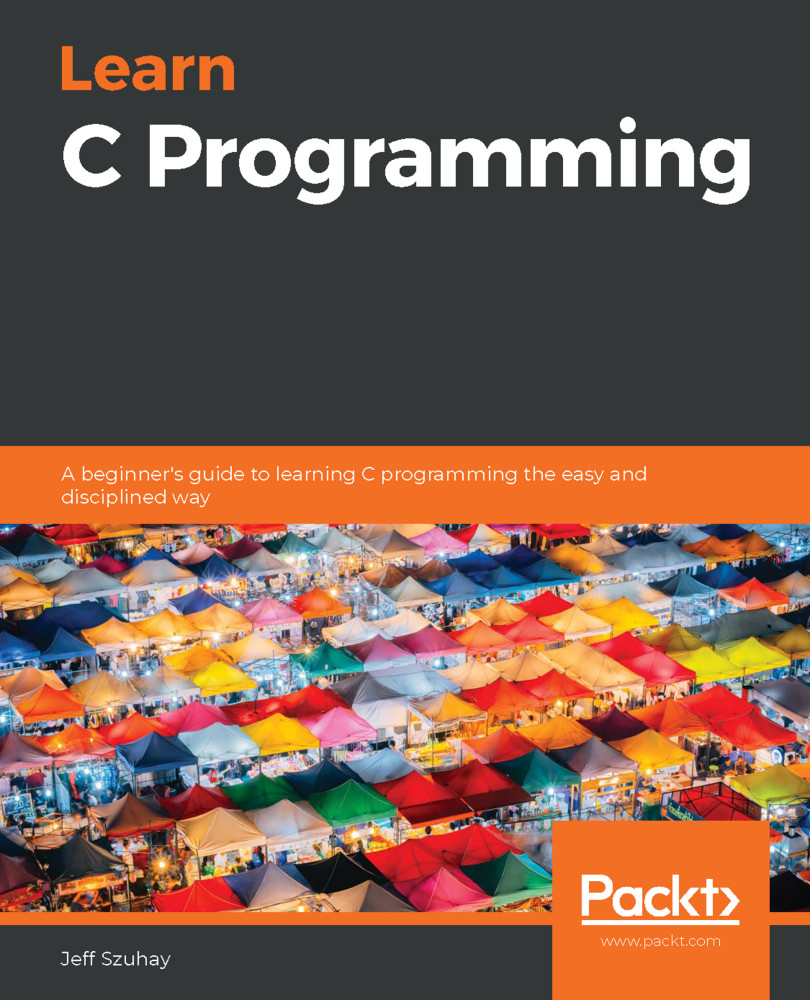In C, each array element in a string is a character from a character set. In fact, the C character set, also called American Standard Code for Information Interchange (ASCII), is made up of printable characters—those that appear on the screen—and control characters.
Control characters allow digital devices to communicate, control the flow of data between devices, and control the flow data layout and spacing. The following control characters alter how characters are displayed, providing simple character-positioning functions:
- Horizontal tab (moves the position forward by a number of spaces on the same line)
- Vertical tab (moves the position to the next line but keeps the current horizontal position)
- Carriage return (returns the position to the first column)
- Line feed (advances to the next line)
- Form feed (advances to the next page)
- Backspace...


